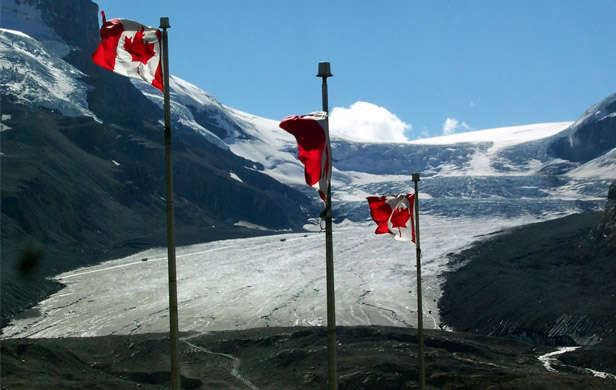by Bruce Cheadle, The Canadian Press
OTTAWA – Never mind those international targets, the federal government appears to be having trouble meeting even its own internal operational goals for cutting greenhouse gas emissions.
An internal PowerPoint presentation prepared by Public Works and Government Services Canada asks each federal department to ante up its emissions reductions number for the coming 2014-15 fiscal year.
And it prods departments to “please consider increasing your commitment to help bridge the current five per cent gap.”
“They’re clearly going to miss their targets,” said John McKay, the Liberal environment critic.
[quote]I can’t say I’m overly surprised by that given that they’re not serious about national targets, so why would they be serious about government targets.[/quote]
As part of a “greening government operations” exercise, the Conservatives have committed to reducing GHG emissions from federal buildings and transportation fleets by 17 per cent below 2005 levels by the year 2020.
That’s the same target the Harper government agreed to for Canada as a whole as part of the Copenhagen accord in 2009.
Canadian climate targets slipping further away
A fall report from Environment Canada shows the country is slipping further away from meeting its Copenhagen emissions goal, although the government likes to claim Canada is halfway to the target.
Similarly, when Public Works says there’s a five per cent gap in operational emissions cuts, it doesn’t mean the government’s work is 95 per cent complete.
A 2012 report by Environment Canada on the federal sustainable development strategy makes clear “the government is on track to achieve a 12 per cent decrease in emission levels relative to the base year by fiscal year 2020-2021. A projected gap of about five per cent highlights the need for additional efforts in order to achieve the 17 per cent federal target.”
In other words, the government is currently on pace to miss its self-imposed internal 17-per-cent target by five percentage points — or almost 30 per cent. And it would seem no headway has been made on that front since 2012.
Public Works says the current reductions are “more significant … than what was anticipated for the second year of implementation of the federal sustainable development strategy.”
Spokesman Pierre-Alain Bujold said in an email that the current reductions are “subject to change over time as departments analyze their data, adjust their plans and adopt new plans in order to reach the targets by 2020.”
It’s not the only troubling progress report that’s come to light on Canada’s efforts to reduce emissions.
Canada’s carbon footprint to climb sharply after 2020
The government quietly submitted two reports last month to the United Nations Framework Convention on Climate Change that show Canada’s emissions will spike sharply upward after 2020, driven largely by expansion of the oil sands.
Emissions between 2020 and 2030 are predicted to climb by 81 million tonnes, taking Canada 11 per cent above 2005 levels — notwithstanding hopes that a new round of international climate negotiations in 2016 are supposed to find further global reductions from the 2005 base year.
“Under all scenarios over the forecast period, emissions are expected to grow the fastest in oil sands extraction and upgrading,” says the Canadian report to the U.N.
McKay, the Liberal critic, says if the government can’t get its own emissions under control, it can’t push other sectors of the economy, noting the federal government accounts for almost 15 per cent of Canada’s GDP. Said the Liberal MP:
[quote]If you don’t get leadership out of the federal government in getting their own house in order, how can you actually reasonably expect the rest of the citizens of Canada to be serious about greenhouse gases?[/quote]
McKay acknowledged not nearly enough was done under the previous Liberal governments to reduce Canadian emissions as per the 1997 Kyoto protocol.
“But after a while the blame exercise gets a little tired, especially since you’ve had six or seven years to get your main emitter under control, which is the oil and gas industry.”
Prime Minister Stephen Harper said in a year-end interview that long-delayed regulations on the oil and gas sector will be announced “over the next couple of years.”



Judy Cross, you speak calm words of wisdom. The narrowly defined meaning of the buzz-phrase “climate change” – which has little to do with what a sane person thinks of as a changing climate – is a complete lie. What the greenies mean by “climate change” is “mankind’s actions that emit carbon dioxide caused this” … We’re not talking about the unwise things that mankind has done, like exploding thermonuclear bombs in the atmosphere, or dumping fraking fluids in the ocean (since I have no idea what is in the fraking fluids, I only assume that it is a bad idea)… we’re just talking, strictly, about the carbon dioxide that mankind has put into the atmosphere. Bear in mind that very, very little of the CO2 in the atmosphere today was put there by mankind. Even the sizable increases in CO2 that have been measured since 1950, only a small portion of that CO2 comes from man. The rest comes naturally. The “warming” effect of CO2 in the atmosphere, to the tiny extent that it actually exists (the bulk of the effect comes from water vapor; these gases are mistakenly called “greenhouse gases” – but what they really do, in their warming action, is to absorb radiated “heat energy” at certain wavelengths, and then re-emit those wavelengths, and in doing so, those gases inhibit the flow of heat energy from the earth to space, slightly upsetting the radiation that would have taken place, had there not been any of those gases in the first place). Where was I? Oh yeah, the “warming” effect of CO2 is diminished by the practical effect we call ‘the law of diminishing returns’ – the first little bit of CO2 in the atmosphere, say from zero to twenty parts per million (ppm) has a noticeable effect. After that, increasing the amount of CO2 in the atmosphere has less and less “warming” effect. By the time you reach 200 PPM, adding another 200PPM does nothing at all. So, whatever “warming” that CO2 might contribute, well, that concentration was exceeded long before mankind came on scene. CO2 is necessary – 200 PPM and below, no plant life survives. Recently, plant life has been growing a lot! There is a satellite up in space, looking down at earth, and that satellite measures the plant growth.
http://www.forbes.com/sites/jamestaylor/2013/07/10/global-warming-no-satellites-show-carbon-dioxide-is-causing-global-greening/
So put even more CO2 into the atmosphere!
Canada should not make ANY attempt to reduce CO2 emissions. What little warming that CO2 provides, we need; it won’t warm us any further, and it will improve plant yields, which means more food!
Wow!
CO2 is good for the environment!
This flies in the face of what even climate change deniers think.
Who knew?
Why on Earth would a sane society pay attention to the now completely exposed Global Warming Scam?
And how can I take anything written on these pages seriously when you continue to publish such rubbish.http://www.globalresearch.ca/search?q=Global+Warming+Scam